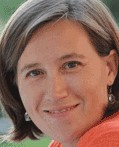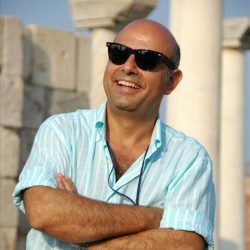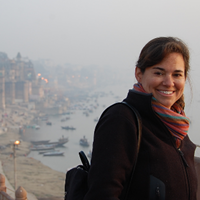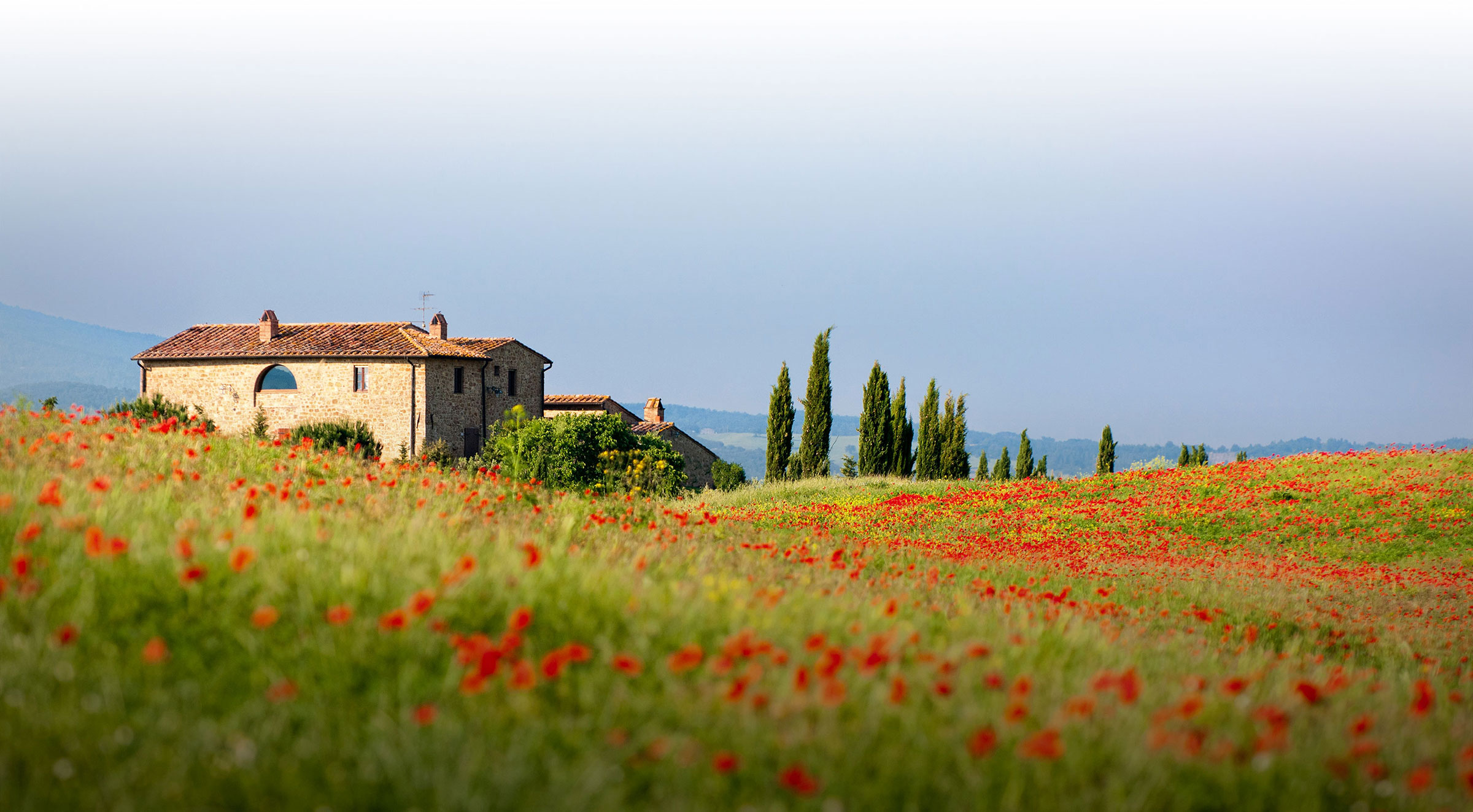The Other Side of History: Daily Life in the Ancient World
November 11, 2015 | By William Glasgow
Imagine you’re a Greek soldier marching into battle in the front row of a phalanx. Or an Egyptian woman putting on makeup before attending an evening party with your husband. Or a Celtic monk scurrying away with the Book of Kells during a Viking invasion. Welcome to the other side of history, the 99% of ordinary people whose names don’t make it into the history books—but whose lives are no less fascinating than the great leaders whose names we all know. Here you’ll encounter such diverse individuals as
- a Mesopotamian hunter-gatherer making a living in one of the world’s earliest permanent settlements;
- an Egyptian craftsman decorating the pharaoh’s tomb in the Valley of the Kings;
- a Minoan fleeing the island of Santorini during a volcanic eruption;
- a Greek citizen relaxing at a drinking party with the likes of Socrates;
- a Roman slave captured in war and sent to work in the mines; and
- a medieval pilgrim on the road to Canterbury.
The Other Side of History: Daily Life in the Ancient World is your chance to get beyond the abstract dates and figures, kings and queens, and battles and wars that make up so many historical accounts. Over the course of 48 richly detailed lectures, Professor Robert Garland of Colgate University covers the breadth and depth of human history from the perspective of the so-called ordinary people, from its earliest beginnings through the Middle Ages. You’ll gain new insights into what daily life was like—what the world actually looked, smelled, and felt like in Neanderthal caves, ancient Egypt, Persia, Greece, Rome, and medieval Britain.
The past truly comes alive in this ambitious course, as Professor Garland takes a series of imaginative leaps to put you inside the world of history’s anonymous citizens, providing you with a fuller understanding of the distant past. You’ll see what daily life was like for workers, the poor, the elderly, the sick, the disabled, refugees, women, children, slaves, and soldiers. Through the professor’s engaging stories and with the aid of dazzling graphics, you’ll experience the texture of daily life in these civilizations like never before—and you’ll be delighted by the ways you’ll identify and empathize with people from another world.
Put Yourself in the Sandals of Ordinary People
The 19th-century historian Thomas Carlyle wrote, “The history of the world is but the biography of great men.” There’s no doubt that most histories take the conventional approach of introducing us to the major figures and important dates. ButThe Other Side of History stimulates your imagination by providing you a vivid glimpse into the real world of the past:
- Go back to the Neanderthal caves, where evidence suggests that although life was dominated by the environment, Neanderthals took care to bury their dead—honoring them just as we do today.
- Experience the rhythms of the Nile, whose predictable rise and fall created a sense of security and tranquility for its inhabitants for 2,000 years.
- Take a harrowing trip as a Greek refugee as you strike out to create a new settlement, but be forewarned: There’s no turning back. Herodotus tells the story of refugees who, after failing to find a suitable land to colonize, tried to return home—only to be pelted with missiles by their fellow countrymen.
- Imagine you’re a poor Roman living under the eaves in the upper floors of a leaky, cramped, rat-infested housing complex. Navigating 200 stairs with a chamber pot was bad enough, but the threat of fire from oil lamps and the rampant spread of disease only added to your vulnerability.
- Contrast the lot of the poor with life as a Roman celebrity. From gladiators who were household names to famous wives such as Theodora, the Roman world of entertainment, sport, and celebrity culture was remarkably similar to that of the 21st century.
The true joy of this course lies in seeing what life was like for ordinary people—and therefore what life would have been like for most of us if we had been born in a different era. Through archaeological evidence and literary records, you’ll connect with a wide range of people over the ages and experience life from their perspectives. This imaginative leap is why we study the humanities—to expand our circle of empathy, compassion, and open-mindedness about the world.
Experience the Texture of Everyday Life
The Other Side of History moves systematically through history, with significant stops in ancient Egypt, Greece, Persia, Rome, and medieval Britain. In each location, Professor Garland explores life from all angles: What did the citizens do for a living? What was their home like? What did they eat? What did they wear? What did they do to relax? What were their beliefs about marriage? Religion? Death and the afterlife? You’ll encounter such interesting aspects of everyday life as
- the use of cosmetics, perfumes, mirrors, hairpieces, and even tweezers in ancient Egypt;
- the secrets of how to survive to old age in ancient Greece, and the society’s system of medicine;
- the intensive military training regimen of Greek hoplites, Spartans, Roman soldiers, and medieval knights;
- the range of career prospects in Persia, from husbandry to goldsmithing to administrative scribing; and
- leisure time in an Anglo-Saxon great hall, complete with board games, drunken storytellers, and a minstrel playing the lyre.
To complement archaeological records, Professor Garland quotes liberally from great literature throughout the ages, explicating key passages that reveal the other side of history. You’ll hear from Herodotus, the Greek playwrights, Homer, Vergil, Tacitus, Ovid, Seneca, Juvenal, and Chaucer, along with anonymous poets and scribes.
Gain New Insights into Our Cultural History
In addition to providing intriguing details about daily life, The Other Side of History offers a cultural perspective. You’ll explore exciting new anthropological discoveries and cutting-edge academic disciplines—such as the burgeoning field of “disability studies”—which offer you a well-rounded overview of the humanities today. Professor Garland’s fascinating analysis not only enriches your knowledge of the past, but sheds light on civilization as we know it.
- See what a powerful influence the development of language had on human culture. Our capacity for symbolic thought led to reason, art, social connections, and more, which allowed our lives to be more than just a brutal fight for survival.
- Discover how to make a mummy, learn about the scales of justice when you meet Osiris in your journey to the afterlife, and see how tomb robbing became a profitable industry for those who believed the afterlife was mere hocus-pocus.
- Follow the trial of Socrates, from his rabble-rousing in and around Athens to his decision to drink the hemlock rather than to flee into exile. You’ll also get inside the heads of the jurors, some of whom must have felt doubt over their decision to condemn him.
- Consider the origins of slavery and explore the different types of slavery in the ancient world, from business workers and industrial miners in ancient Greece to slaves who could earn their freedom—manumission—in ancient Rome. See, too, how slavery evolved into serfdom, and be present at the first great peasant uprising in the Middle Ages.
- Study the role of women in different ancient and medieval civilizations. While many of these societies were deeply sexist by today’s standards, you will meet powerful women who broke the mold and made names for themselves, such as Dido, Cleopatra, and Margery Kempe. You’ll also explore the lives of housewives, prostitutes, and nuns.
Passionate, Personal Lectures
The heart of this course lies in Professor Garland’s passion for his subject. With 30 years of teaching experience and as the author of such books as Daily Life of the Ancient Greeks, he is an expert in the field. He sprinkles the course with anecdotes, such as singing “Onward Christian Soldiers” at the dinner table as a child or his first encounter with the mummy called Ginger at the BritishMuseumin London, which make the lectures personal and engaging. In fact, he says, “This course fits my interests to a tee. In a way, it’s what I’ve been preparing for all my life.”
With a lifetime of preparation for a course on the other side of history, Professor Garland’s enthusiasm is contagious. You, too, will be moved by his vivid descriptions of daily life—in the home and on the job, on the battlefield and in the graveyard. These descriptions are enhanced by a rich display of graphics, maps, and models that illustrate the art, the relics, and the geography of these historical periods.
At the end, you’ll come away with a new understanding and appreciation for past eras, but more important, Professor Garland’s compassionate look at the other side of history enriches our own lives. By crossing space and time in an effort to be another person—someone with whom you might not think you have anything at all in common—you come to realize our interconnectedness. The Other Side of History: Daily Life in the Ancient World takes us on a journey to vastly different eras and shows us the range of possibilities of what it means to be human, making this a journey very much worth taking.








